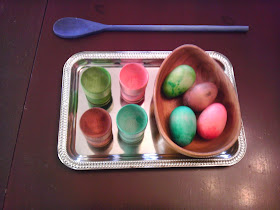I'm going to start putting my lesson on here for several reasons:
-Show the parents exactly what we're doing and give them the resources to do further learning at home.
-Share the ideas and links with my fellow teachers. I sure have benefitted a lot from other teacher's blogs!
-So I don't forget! I want to do a circular curriculum, meaning that we revisit topics each year but on a new level or in a new way. This is a great way to learn as it's appropriate for all age levels (my stuff is geared towards toddlers now) but have great extension activities for older children.
I'm a lazy (read busy. I said toddlers right?) blogger so I'll try to be as complete as possible with the links but I may add on to them the next time we visit this unit. Also every lesson plan is different and mine change with the child's age so I won't classify activities. Something I used as an outdoor activity might work for your science lesson and something I did for a cultural activity might be a good language activity for your kids. Mix and Match and feel free to add your suggestions or link in the comment section!
So here's the first one:
Online storybooks:
Short and sweet.
Long but good! Music and reading really fun. Love the accent!
Online Videos:
No sound and grainy image. Do not maximize for better image.
We used this short video to discuss the parts of a volcano.
Not our favorite. Slow and don't match our slideshow cards
Fun for older children (some of the toddler we're nervous about the images.
Features real life dinosaur bones and an image of Camille Saint Saens.
Surprise ending the the kids liked but some found scary.
By far their favorite! Short and fun. Features fossils verse by Ogden Nash
Dinosaur Breakfast! One plain and one goat cheese and honey toast with blueberries.
My Pinterest Board for This Unit:
My Slide Shows (often based on printable resources below):
I added Pterodactyl to the cards below and the sounds
We use this each time we feature a composer in the set
Printable Resources:
Activities:
What's on Our Shelves:
Homemade Laminated Sandpaper Land and Water Form Cards (instructions on French but used templates in reduced size with laminated squares of blue construction paper and sandpaper cutouts) and a Velociraptor from Target's dollar bins. We use the landform names when we play with the dino on the cards. One of my girls loves to have the dino drink from or fall in the water. "oh, no! The Velociraptor fell in the bay!" The younger children just experiece the cards as "rough" and "smooth" Can also match these to the real life images in the Land and Water Forms slide show.
Wooden "dino" eggs and egg cups hand-dyed with food coloring. To match by color. Younger children work with one at a time as a simple puzzle or match one to one without matching colors. The older children place the eggs in the egg cups on the tray at one end of the room and the empty egg bowl on the other and use the wooden spoon to walk it across the room and deposit it in the bowl. They needed my help putting the egg on the spoon but the almost-2-year-old could do it with little trouble. The younger toddlers used the spoon to "cook". Wooden spoon from Dollar Tree and dyed with RIT. Silver tray from Dollar Tree.
Alphabet Dinosaur Bones Excavation using "real tools". Dish tub and magnifying glasses from Dollar Tree. Bones laminated from Dino Dig! file folder game. Paintbrushes from IKEA. Spoon/chopsticks from Target dollar bins. Sand "borrowed" from local playground. ;)



.JPG)









































